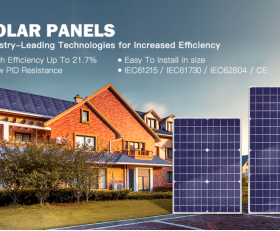Calculating the 5-Year ROI for Residential Energy Storage
Energy storage is revolutionizing the way we manage and utilize energy. For residential users, implementing energy storage systems can significantly reduce energy costs, improve grid stability, and support the transition to renewable energy sources. One of the most compelling reasons to consider energy storage is its potential return on investment (ROI) over a five-year period. , we’ll explore how to calculate the 5-year ROI for a residential energy storage system.
What is ROI?
Return on Investment (ROI) is a metric used to evaluate the efficiency of an investment. It represents the amount of return generated relative to the cost incurred. A higher ROI indicates a better investment. For energy storage, ROI helps you understand the financial benefits of installing a system over a specific period.
Steps to Calculate 5-Year ROI
Initial Investment The first step in calculating ROI is to determine the initial cost of the energy storage system. This includes the purchase price of the battery, installation costs, and any other associated expenses. For example, a typical residential solar energy system with a battery might cost $50,000 to $100,000, depending on the size and efficiency of the system.
Energy Savings The next step is to estimate the energy savings generated by the system. Energy storage allows you to store excess energy produced during peak production times (e /.g., sunny days) and use it during periods of high demand (e.g., evening or winter). For example, a household that produces 10,000 kWh of energy per year and uses 5,000 kWh annually would save 5,000 kWh with a storage system.
Cost of Energy The cost of energy is a critical factor in calculating ROI. In the U.S., the average cost of electricity is around $0.12 per kWh. Multiply the energy savings (from step 2) by the cost of energy to determine the annual savings. Using the previous example, 5,000 kWh x $0.12/kWh = $600 in annual savings.
Government Subsidies and Incentives Many governments offer incentives and rebates for installing energy storage systems. These can significantly reduce the initial cost of the investment. For example, the federal Inflation Reduction Act (IRA) offers tax credits for solar energy storage systems. Check your state’s regulations for available incentives.
Recycling Costs Over time, energy storage batteries degrade. Recycling programs can offset these costs. Many states offer rebates or incentives for e-waste, including batteries. The cost of recycling can vary, but it is often a small portion of the total investment.
Payback Period The payback period is the time it takes for the savings generated by the energy storage system to offset the initial investment. Divide the initial investment by the annual savings to estimate the payback period. For example, an initial investment of $50,00, with annual savings of $600, would have a payback period of approximately 83 years. However, this is a simplistic calculation and does not account for factors like government incentives, energy prices, or system efficiency.
Net Present Value (NPV) NPV is a more advanced metric that considers the time value of money. It calculates the present value of all cash flows generated by the investment. A positive NPV indicates that the investment is profitable, while a negative NPV suggests it is not.
Example Calculation
Let’s walk through an example to illustrate the ROI calculation:
Initial Investment: $80,000 Energy Savings: 5,000 kWh/year Cost of Energy: $0.12/kWh Annual Savings: 5,000 kWh x $0.12/kWh = $600 Government Incentives: $4,000/year Total Annual Savings: $600 + $4,000 = $4,600 Payback Period: $80,000 / $4,600 ≈ 17.4 years NPV: Positive, indicating the investment is profitableCalculating the ROI for a residential energy storage system is a valuable tool for making informed investment decisions. While the initial costs can be high, the long-term benefits, including energy savings, reduced reliance on grid electricity, and potential government incentives, make it a worthwhile investment. With proper planning and consideration of all factors, you can determine if an energy storage system is right for your home.
By taking action today, you can enjoy the benefits of energy storage for years to come.

